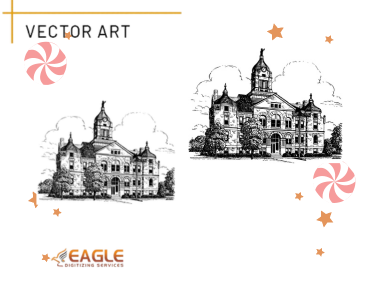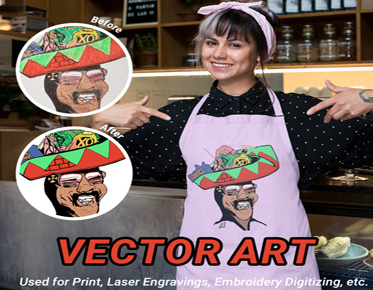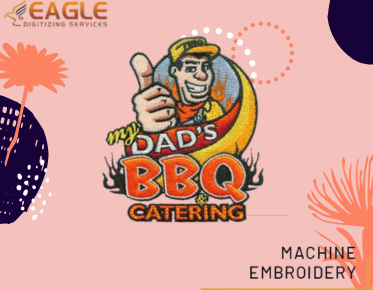Vector Mastery: Elevating Brochure Design with Stunning Vector Graphics
In the dynamic realm of marketing, where visuals speak volumes, the choice of design elements can make or break the impact of promotional materials. Brochures, as versatile marketing tools, benefit immensely from the precision and scalability offered by vector graphics. We will unravel the art of using vector graphics to create stunning brochures, exploring the advantages, design techniques, and transformative impact on marketing materials. For the excellent online vector conversion, have no qualms about getting in touch with us.
The Power of Vector Graphics in Brochure Design:
1. Scalability Without Sacrificing Quality:
Vector graphics, unlike raster images, are resolution-independent. This means that whether you're viewing a brochure on a small business card or a large billboard, the graphics remain sharp and clear. This scalability ensures that your brochure maintains visual excellence across various sizes, catering to the diverse platforms where marketing materials are displayed.
2. Versatility in Design Elements:
Vector graphics provide designers with a wide range of versatile elements. From sleek logos and icons to intricate illustrations and typography, vectors can seamlessly adapt to diverse design needs. This versatility allows for the creation of cohesive and visually appealing brochures that effectively communicate the brand's message.
3. Clean Lines and Smooth Curves:
The precision of vector graphics ensures clean lines and smooth curves in design. This is particularly crucial in brochure design, where professionalism and clarity play pivotal roles. Whether it's crafting intricate patterns or refining the edges of typography, vectors deliver a level of detail that enhances the overall aesthetic appeal of the brochure.
4. Efficient File Sizes:
Vector files are generally more compact in size when compared to their raster files. This efficiency is advantageous for brochure design as it reduces file load times, making it easier to share digital brochures online or via email. Smaller file sizes also contribute to quicker printing times for physical copies, ensuring a seamless production process.
Design Techniques for Stunning Vector-Based Brochures:
1. Embrace Minimalism for Impact:
The scalability of vector graphics allows for the effective use of minimalistic design. Embrace simplicity in layout and utilize ample white space to allow key elements to shine. A clean and uncluttered design not only enhances readability but also exudes a modern and sophisticated aesthetic.
2. Play with Color Harmony:
Vector graphics excel in handling color, allowing designers to experiment with harmonious color palettes. Select colors that align with the brand's identity and resonate with the intended emotional response. Consistent and thoughtfully chosen colors enhance brand recognition and contribute to a cohesive visual narrative throughout the brochure.
3. Create Dynamic Infographics:
Infographics are powerful tools for conveying information in a visually engaging manner. Leverage vector graphics to create dynamic infographics that present data, statistics, or processes with clarity. The ability to scale infographics ensures that readers can easily absorb information, whether viewing the brochure on a screen or in print.
4. Customizable Icons and Illustrations:
Icons and illustrations are essential visual elements that can elevate the impact of a brochure. Utilize customizable vector icons and illustrations to add a unique touch to key points or sections. The adaptability of vectors allows for easy customization to align with the tone and theme of the brochure.
5. Typography Precision:
Typography plays a crucial role in conveying the message of a brochure. Vector graphics enable designers to achieve precision in typography, ensuring that text remains sharp and legible regardless of size. Experiment with different fonts and styles to find a typography treatment that complements the overall design theme.
Crafting a Vector-Enhanced Brochure: Step-by-Step Guide
Step 1: Define Your Purpose and Audience:
Before diving into design, clearly define the purpose of your brochure and identify your target audience. Understanding the goals and preferences of your audience will guide the design choices, ensuring that the brochure effectively communicates its intended message.
Step 2: Develop a Visual Hierarchy:
Create a visual hierarchy that guides the reader through the content. Identify key focal points, such as headlines, subheadings, and calls to action. Use vector elements to create visual cues that draw attention to these focal points, guiding the reader seamlessly through the brochure.
Step 3: Select a Cohesive Color Palette:
Select a color palette that aligns with the brand and elicits the desired emotions. Utilize vector graphics to implement consistent color schemes across the brochure. This cohesiveness enhances brand recognition and creates a visually unified and professional appearance.
Step 4: Incorporate Vector Icons and Illustrations:
Enhance key sections of the brochure with vector icons and illustrations. Whether it's showcasing product features, outlining services, or adding decorative elements, vectors provide a level of detail and customization that enhances the overall visual appeal. Ensure that these elements contribute to a cohesive and engaging design.
Step 5: Infuse Consistent Typography:
Optimize the readability and aesthetics of your brochure by leveraging vector graphics for typography. Experiment with fonts, sizes, and styles to create a typographic hierarchy that aligns with the overall design theme. Ensure that the vector-based text remains sharp and clear at various sizes.
Step 6: Create Dynamic Infographics:
Transform data and complex information into dynamic infographics using vector graphics. Whether presenting statistics, timelines, or process flows, infographics add visual interest and aid in information retention. Ensure that the infographics are scalable for optimal viewing on various platforms.
Step 7: Implement Minimalistic Design Principles:
Embrace minimalism to create a sleek and modern brochure design. Use vector graphics to maintain clarity and simplicity in layout. Focus on essential elements and leverage white space strategically to enhance visual impact. The scalability of vectors ensures that the minimalistic design remains effective across different formats.
Step 8: Test Across Platforms:
Before finalizing your brochure, test it across various platforms and devices. Ensure that the vector graphics maintain their quality and clarity on screens of different sizes. Pay attention to details such as color accuracy, text legibility, and overall visual consistency.
The Transformative Impact on Marketing Materials:
1. Professionalism and Brand Image:
Vector-enhanced brochures exude a level of professionalism that contributes to a positive brand image. The clean lines, crisp typography, and cohesive design elements create a polished appearance that resonates with professionalism and attention to detail.
2. Versatility for Multichannel Marketing:
The versatility of vector graphics makes brochures suitable for multichannel marketing. Whether shared digitally via email or social media or distributed in print, the scalability ensures a consistent and visually appealing experience across different platforms.
3. Effective Communication of Information:
Vector graphics enable the effective communication of information through visually engaging design elements. From infographics that simplify complex data to icons that convey concepts at a glance, the vector-based approach enhances the efficiency of conveying information within the limited space of a brochure.
4. Brand Consistency Across Materials:
Consistency is key in brand communication. Vector-enhanced brochures contribute to brand consistency by ensuring that design elements, colors, and typography align with the established brand identity. This consistency strengthens brand recognition and fosters a cohesive brand image.
Conclusion:
In the realm of brochure design, the adoption of vector graphics is a transformative step toward achieving stunning and impactful marketing materials. The precision, scalability, and versatility of vectors empower designers to create brochures that not only captivate the audience but also communicate the brand message with clarity and professionalism. As businesses navigate the visual marketing landscape, vector-enhanced brochures stand as dynamic tools that elevate brand communication to new heights, leaving a lasting impression on the audience.Here are Some Key Points You Should Keep in Mind Concerning vector artwork conversion!



